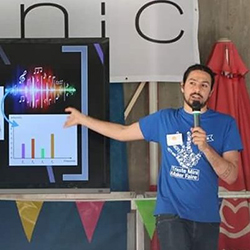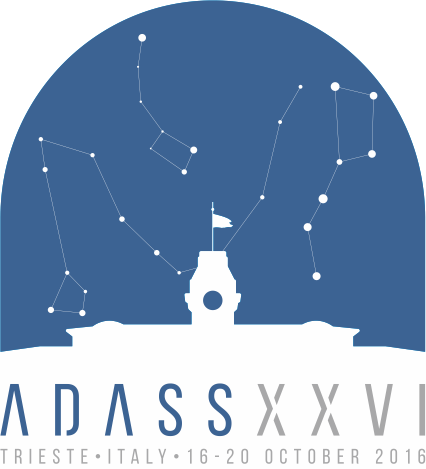Romelli Erik
Contact

- Position:
- University of Trieste, INAF-OATs
- Address
- Italy
Miscellaneous Information
- Miscellaneous Information
-
Abstract Reference: 30766
Identifier: P8.22
Presentation: Poster presentation
Key Theme: 8 OtherUsage of an End-to-End Simulator for Instrument Operations: Application to the Euclid Mission
Authors:
Romelli Erik, Battaglia Paola Maria Gregorio AnnaWe here propose to use an End-to-End mission performance Simulator (E2ES) as a tool to support instrument operations. Such simulator enables the generation of simulated output data for selected test scenarios to support the assessment of instrument configuration changes on the mission performance and to analyse the impact of individual error sources on the output of an ideal system. E2ES have been widely used for Earth Observation (EO) missions. They demonstrated to be a useful tool to assess the mission performance and support the consolidation of the technical requirements and conceptual design, as well as to allow end-users assessing the fulfilment of requirements by the mission. E2E mission performance simulators are based on a reference architecture containing the basic modules for the simulator, providing the required flexibility to support extensive and evolutionary growth. This, coupled to a simulator framework and a repository of models (or building blocks), allows defining and implementing the E2ES faster and with less effort. In this work we present a study for an E2ES taking the European Space Agency (ESA) mission Euclid as a test case. Euclid will investigate the distance-redshift relationship and the evolution of cosmic structures by means of two instruments: the Visual Imager (VIS) and the Near-Infrared Spectrometer and Photometer (NISP). We here present the designed architecture of an E2ES for Euclid instrument operations and an implemented prototype, providing basic functionalities, focused on the NISP instrument, with some preliminary results. NISP and VIS are operated by the Instrument Operation Teams (IOTs). The IOTs shall play a crucial role in the successful execution of the Euclid mission they are in charge of the monitoring, control and maintenance of the Euclid payload, from initial diagnostics of field quality to detailed trend analysis of instrument characteristics and calibration. The simulation of synthetic data is commonly used by scientist and engineers to consolidate the instrument configuration and to define operational strategies on such complex missions. The IOTs will be equipped with dedicated software tools to allow a quasi-automatic monitoring and manage operational activities. We propose our E2ES as a tool for the IOTs to simulate test scenarios in order to assess the mission performance, changes in the instrument configuration and to analyse possible error sources.



